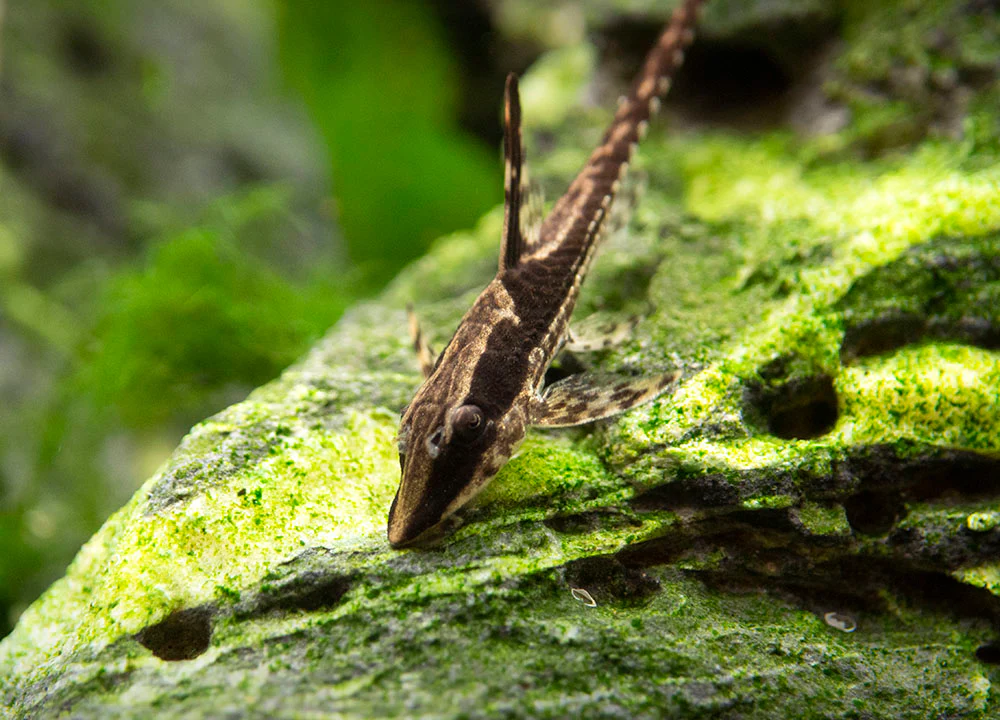
Size
8 inches
Physical Characteristics
In addition to the spectacular fin extensions, its elongated, slender body, brown or yellow color, and little black spots that run along the sides distinguish this type of catfish. The bigger, elongated body and fins of Royal Farlowella, as opposed to the thinner bodies of their twig-like relatives, are one feature that sets it apart from other whiptails. Interestingly, the male catfish’s first dorsal fin is fairly long. Moreover, adult males can be distinguished from females by their odontodes, which are whisker-like extensions on their skulls. Females are frequently thicker.
Temperament
The majority of other non-aggressive fish and invertebrates get along well with the Royal Farlowella because of its extreme calmness. Larger species could potentially consume very tiny dwarf shrimp, especially their fry. Nonetheless, a lot of aquarists successfully maintain Royal Farlowella with their shrimp colonies.
Habitat
They are extensively dispersed in Colombia’s Caribbean and Pacific slope rivers as well as those in Panama, Colombia, and Ecuador. The majority live in swiftly moving rivers with abundant oxygen, cool water temperatures, and solid substrates.
Keeping as Pet

- Feeding:
Greens and protein should make up approximately 70% and 30% of diets for the optimum growth. On top of biofilm or aufwuchs, they are typically accustomed to feeding mainly on green algae that grows on rocks and wood.
Many different foods are acceptable at Royal Farlowella. Algae wafers, crushed fish flakes, spirulina, sinking catfish pellets, krill, meatier artemia meals like live or frozen bloodworms, and green vegetables like zucchini, spinach, cucumber, cabbages, etc. can all be added to their diets as supplements.
- Tank size:
The Royal Farlowella Catfish should be kept in aquariums with a minimum volume of 30 gallons (about 120 L). This is because of the fish’s size; it requires a roomy tank with adequate filtration and water movement.
At least twice as long as the cats themselves should be in the tank’s depth. For them, the length of the tank is more crucial so they can easily turn around.
- Water Parameters:
Temperature: Royal Farlowella prefers water that is between 72 and 79 °F (22 – 26 C). They cannot stand very cold water.
pH: Tank water with a pH between 6.5 and 7.5 is ideal for catfish growth.
Hardness: Strive to keep the water’s hardness values between 4 and 10 dGH; this fish should not be kept in excessively hard water.
- Tank Mates:
Groups of Royal Farlowella can be maintained with a 1:2 stocking ratio (one male to two female). Because to its tranquil disposition, this unusual fish can be added to most varieties of community tanks.
Regarding compatibility, Royal Farlowella gets along with the majority of calm freshwater fish and invertebrates.
Table





